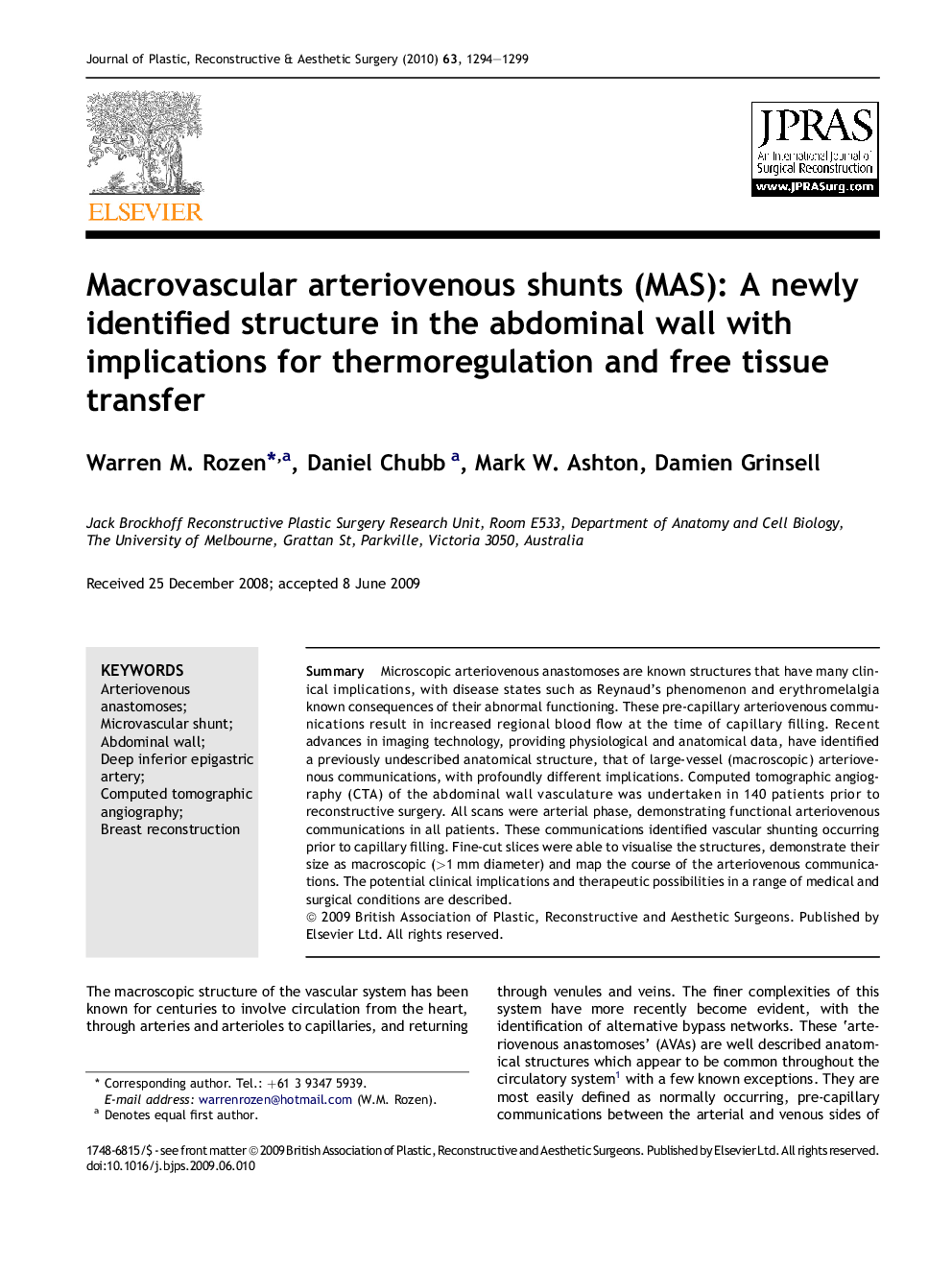| Article ID | Journal | Published Year | Pages | File Type |
|---|---|---|---|---|
| 4119300 | Journal of Plastic, Reconstructive & Aesthetic Surgery | 2010 | 6 Pages |
SummaryMicroscopic arteriovenous anastomoses are known structures that have many clinical implications, with disease states such as Reynaud's phenomenon and erythromelalgia known consequences of their abnormal functioning. These pre-capillary arteriovenous communications result in increased regional blood flow at the time of capillary filling. Recent advances in imaging technology, providing physiological and anatomical data, have identified a previously undescribed anatomical structure, that of large-vessel (macroscopic) arteriovenous communications, with profoundly different implications. Computed tomographic angiography (CTA) of the abdominal wall vasculature was undertaken in 140 patients prior to reconstructive surgery. All scans were arterial phase, demonstrating functional arteriovenous communications in all patients. These communications identified vascular shunting occurring prior to capillary filling. Fine-cut slices were able to visualise the structures, demonstrate their size as macroscopic (>1 mm diameter) and map the course of the arteriovenous communications. The potential clinical implications and therapeutic possibilities in a range of medical and surgical conditions are described.
